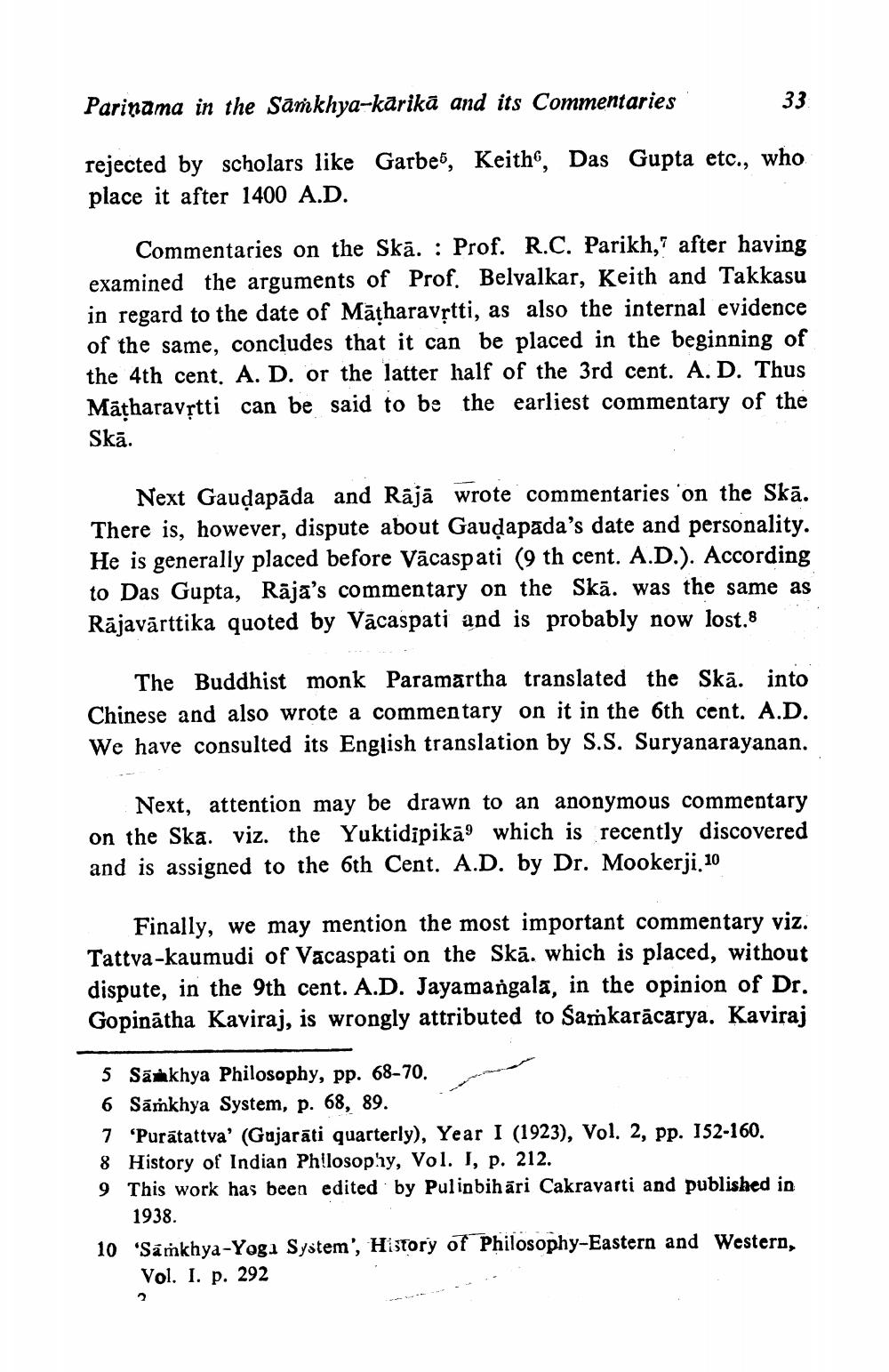________________
Parinama in the Samkhya-kārikā and its Commentaries
33
rejected by scholars like Garbes, Keith, Das Gupta etc., who place it after 1400 A.D.
Commentaries on the Skā. : Prof. R.C. Parikh, after having examined the arguments of Prof. Belvalkar, Keith and Takkasu in regard to the date of Mātharavștti, as also the internal evidence of the same, concludes that it can be placed in the beginning of the 4th cent. A. D. or the latter half of the 3rd cent. A. D. Thus Māgharavștti can be said to be the earliest commentary of the Skā.
Next Gaudapáda and Rājā wrote commentaries on the Skā. There is, however, dispute about Gaudapada's date and personality. He is generally placed before Vācaspati (9 th cent. A.D.). According to Das Gupta, Rāja's commentary on the Skā. was the same as Rājavārttika quoted by Vācaspati and is probably now lost.8
The Buddhist monk Paramartha translated the Skā. into Chinese and also wrote a commentary on it in the 6th cent. A.D. We have consulted its English translation by S.S. Suryanarayanan.
Next, attention may be drawn to an anonymous commentary on the Ska. viz. the Yuktidipikāwhich is recently discovered and is assigned to the 6th Cent. A.D. by Dr. Mookerji. 10
Finally, we may mention the most important commentary viz. Tattva-kaumudi of Vacaspati on the Skā. which is placed, without dispute, in the 9th cent. A.D. Jayamangala, in the opinion of Dr. Gopinātha Kaviraj, is wrongly attributed to Šamkarácarya. Kaviraj
5 Sankhya Philosophy, pp. 68-70. 6 Sámkhya System, p. 68, 89. 7 'Purātattva' (Gujarāti quarterly), Year I (1923), Vol. 2, pp. 152-160. 8 History of Indian Philosophy, Vol. I, p. 212. 9 This work has been edited by Pulinbih āri Cakravarti and published in
1938. 10 'Sámkhya-Yogi System', History of Philosophy-Eastern and Western,
Vol. I. p. 292




